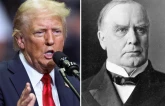
As Martha, Elizabeth Taylor gave an Oscar winning performance for the second time in Who’s Afraid of Virginia Woolf in 1966. Her first Oscar was for Butterfield 8, which was released in 1960.
According to many critics, as Martha, she was at the best of her entire film career. The film was shown at SAFMA Media Centre on Friday.
The film, an adaptation of Edward Albee’s dark play, was directed by Mike Nichols on a screenplay written by Ernest Lehman. The film focuses on the inner hatred, doubts and dubious personalities of the two couples who like to enjoy fun and game drink parties. Taylor (Martha) and Richard Burton (George) play the leading roles. George is a teacher of history in the college where Martha’s father is president. The couple was married at the time. It was their first marriage, which remained intact from March 15, 1964 to June 1974.
Besides Elizabeth Taylor and Richard Burton there are two other characters in the film, George Segal as Nick and Sandy Dennis as Honey playing the role of Nick’s wife. The high drama starts after a late night party at George’s house, when in a fit of intoxication all the four characters become self-indulgent grotesque and provocative.
Gradually they enter into realm of morbidity leaving any trace of rationality behind. Liquor-riddled Martha frowns at her husband and lewdly dances with Nick at the cost of George’s furry. The expression of a normal woman is replaced by a ferocious cat who scowls continuously at George. The way she behaves reminds one of her character in Taming of the Shrew where she played the role of an uncouth, boorish and boisterous young woman.
The film runs towards climax deconstructing the normal identity of the four characters in the bout of fun and games, as fantasized by George. The whole film was picturised in George and Martha’s house except one scene on the road side and the other in the car.
Historically, the importance of the film can be judged by the significant role it played in changing the ethical code of motion pictures. The language and situations are impregnated with profanity which were seen only in experimental theatres in the 60s. After it was released, there was a commotion in the film world. Catholic Legion of Motion Pictures and The Motion Pictures Association of America (MPAA) took serious notice of it, which jolted the Warner Brothers top executives.
However after minor deletions the issue was settled amicably. The film was considered groundbreaking for having a level of profanity and sexual implications unheard of at the time. Since than MPAA film rating started changing and more openness was accommodated.
Originally Jack Warner and Edward Albee opted for James Mason and Bette Davis for the roles of George and Martha but Nichols and Lehman prevailed upon for casting Taylor and Burton. To play her frumpy and fiftyish Character, Taylor gained 3.5kg and her performance proved that their final selection was not faulty. The two hours screaming off in the film may seem wearisome for common viewers but, to a film aficionado, it was incredible.
Elizabeth Taylor and Richard Burton preformed together in eight films, starting from Cleopatra (1963) and ending with Under Milk Wood (1974).
Richard Burton is buried in a small cemetery in the outskirts of Geneva Lake in Switzerland near their village home which they both built as their dream house. The people of the village waited to see Taylor’s grave along with Burton but she was interred in Los Angles, never to meet Burton again.
Published in The Express Tribune, April 02nd, 2011.




1723807223-0/jimin-(1)1723807223-0-165x106.webp)




1725868632-0/Untitled-design-(50)1725868632-0-270x192.webp)
1725524834-0/Mary-poppins-(1)1725524834-0-270x192.webp)






COMMENTS
Comments are moderated and generally will be posted if they are on-topic and not abusive.
For more information, please see our Comments FAQ